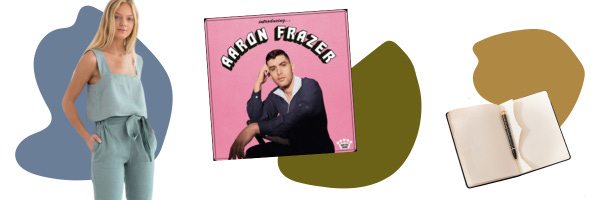Red light this, cycle syncing that… it sure seems like every few weeks there’s a new health buzzword floating around social media.
…Which, to be honest, I don’t always hate since some are great tips that can have a positive impact, just as long as you’re doing them responsibly and *keep* doing them longer than the trend cycle😉
But one topic we’ve all seen over and over for the past few years is the idea of reducing inflammation in the body
Trendy as this concept may be, what does it actually mean? Simply put, when your body senses an injury or foreign substance, your immune system activates and sends out an inflammatory response.
When everything is working as it should, this is a good thing! Because we want our bodies to be able to fight off invaders and repair themselves. It’s important to remember that not all inflammation is bad.
Take a paper cut for example. It’s a little red, a little tender, swollen, maybe a little hot… that is an acute, normal inflammatory response.
But there’s a difference between this normal inflammation and chronic inflammation, which is when your body continues to send inflammatory cells even when there’s no outside danger. Basically this results in your body being in a state of overdrive and hyper-vigilance, and this is when inflammation can start attacking your own body.
Symptoms of excessive inflammation vary greatly (depending on how and where the inflammation manifests within the body), but here are a few examples:
Digestive changes
Brain fog or difficulty focusing
Fatigue or low energy
Fever
Joint pain
Mouth sores
Bloating, inflammation, fluid retention
Digestive ulcer
Skin rash, acne, etc.
Depression/anxiety
Weight changes
Safe to say that there are so many different, often vague symptoms that demonstrate chronic inflammation and this list really just scratches the surface, but if you’re experiencing these symptoms you may want to consider finding ways to reduce inflammation in your body, which is what I’m going to be outlining today. From nutrition tips and supplements, all the way to holistic hacks and everyday ideas, we are covering it all!
As always, this is not a substitute for medical care or advice, but rather some simple, holistic things you can do in day to day life that help lower the inflammatory response. Let’s dive in!
Ugh, I know. We are starting with the most boring, yawn-worthy one first. But stick with me, team.
“Manage your stress” is something we hear so often it has almost lost its meaning, but it is really important. One study found that self-perceived stress was correlated with alterations in cortisol (the stress hormone), which was correlated with higher inflammation in the body.
Essentially— when we are in a hyper stressed or wound up state, inflammation follows. So one of the best ways to reduce it is to try to limit stress and reduce cortisol.
And this is kind of choose your own adventure — you get to decide the best way to reduce stress in your own life. Maybe it’s something small like meditation, maybe limiting screen time, or maybe it’s going a bit deeper and doing something like evaluating your career and relationships. But ultimately it’s about taking inventory of the stress in your life and just doing the small things that protect your peace a bit more.
I know this can sound fluffy and like self-care rhetoric, but reducing your stress genuinely can impact your overall health and lower inflammation in the process.
While I will never be the person who claims ANY supplement is a “quick fix” (because they’re not), a proper vitamin can be a powerful tools when taken responsibly and consistently. Here are a handful of supplements that can be helpful at lowering inflammation in the body.
(*Note: I did use some commissionable links in this post, but these are all vitamins, products, etc. that I personally use & spend my own money on— girl scout honor. )
Curcumin* – if nothing else, I would try curcumin! This is the active ingredient in turmeric, and it’s an incredible anti-inflammatory, shown time and time again to reduce C-reactive protein (a lab marker of inflammation)
Ginger — also an amazing anti-inflammatory. You can cook with it, put it in a wellness shot, whatever you’d like to do to add it to your diet. A great option!
Ginger-turmeric tea*: Bonus idea to sip ginger-turmeric tea. It’s a delicious way to get the benefits of the first two items on this list. (Pssst: Trader Joe’s has an amazing one! I’m 10/10 obsessed.)
Vitamin D* — in addition to being a great anti-inflammatory, Vitamin D has tons of other benefits.
Vitamin C* — another good ol’ classic option that is a powerful anti-inflammatory through its work neutralizing free radicals.
Glutathione* — Another master antioxidant! Oxidation can lead to reactive oxygen species within the body, which can lead to chronic inflammation. Glutathione is an incredibly powerful antioxidant to help combat this. (Note: this supplement is often more expensive so it’s definitely not a “need”, but I do find noticeable results when I take it consistently!)
As always, be sure to check with your doctor before beginning to take a new supplement, but these are some good options to consider.
Whether it’s forest bathing, camping, grounding barefoot, or swimming in nature, time outside is shown to have an anti-inflammatory effect. (Yes, really!)
One study showed that those who spent an extended time in nature had a decrease in oxidative stress, pro-inflammatory levels, and serum cortisol levels compared to those in an urban environment.
This is kind of a newer area of research, but it’s something I feel like we all intuitively know. Like that feeling of swimming in the ocean or going on a long hike outside, we feel more grounded, more peaceful. And again, it kind of goes back to that idea of limiting stress. It’s kind of a chicken/egg situation, but time in nature and the benefits of being outside and connecting with the earth can lower our stress and also reduce inflammatory markers.
Okay, this one has some nuance to it. I want you to work out! I want you to be active! I want you to move your body! But…
If you are currently doing super intense HIIT classes, crossfit, Orange Theory, or intense runs every day, I highly recommend incorporating a few rest days a week of low-intensity activity (yoga, walking, etc.) per week.
So often people feel they need to work out so hard in order to make a difference in their body, but there can be TOO much of a good thing! Back-to-back-to-back intense work outs with no recovery time can actually raise the inflammation in your body, cause swelling, puffiness, fatigue, etc. because your muscles have not had the time to properly recover.
(If this topic is of interest to you, I think you’ll like my oldie-but-a-goodie guide to working out along with your menstrual cycle here!)
If nothing else, I would focus here first! The food you eat is so important for inflammation. This is a huuuuuuge topic (it could honestly be a post all on its own!), but I’ll sum it up with three main nutrition changes you can make to help reduce inflammation in the body:
Control your blood sugar. Blood sugar that ricochets all over the place can have a very inflammatory response on the body. Some tips for stabilizing blood sugar include:
Pair carbs with protein or a fat source (here are some snack ideas)
Start your day with a breakfast that has 30g of protein
Try a continuous glucose monitor (let me know if you need a rec!)
Add in rather than take away. A really easy one that is not about eating less or removing a food group is to add in more fruits and veggies. Fruits and veggies are truly one of the most amazing sources of antioxidants and anti inflammatories. Eat the rainbow, my friends!
Limit pro inflammatory foods (AKA, eat whole foods as much as possible): Which is basically a fancy way of saying the foods you know aren’t good for you. Processed stuff, soda, chips, vegetable seed oils…there are so many things that are pro inflammatory. Basically as long as you’re mainly sticking to whole foods 90% of the time, you’re rockin’ it.
This one will make my 100% Finnish Grandpa Sulo very proud— sauna! Not only is getting in the sauna incredibly relaxing, it is shown to have an inverse relationship on C-reactive protein (again, this is a marker of inflammation in the body). Not only that— it appears that the more often you sauna, the more inflammatory-reducing benefits you may receive.
As someone with a lot of Finnish heritage in my family, this is one of my personal favorite ways to reduce inflammation. Take this as your sign to get that room pipin’ hot, pour the water on the stones, and ahhhhhhh. It's great for relaxation, detoxification — sauna has so many benefits, but it also is great for reducing inflammation.
As I talked about above, inflammation can lead to swelling. This is personally one of the main ways I experience inflammation— bloated belly, puffy face, fluid-retaining extremities, you know the drill.
So, when you’re feeling that sort of sluggish, puffy feeling, lymphatic modalities can help alleviate that and help facilitate the processing of this lymphatic fluid (which can in turn reduce swelling)
One example is dry brushing, which is simply using a dry brush to lightly stimulate the lymphatic system (find my oldie-but-a-goodie guide here). You can also use a gua sha sone to reduce swelling in the face (find my video tutorial here). Or, if you can swing it financially, getting a lymphatic massage can be incredible. The takeaway? When you’re experiencing physical swelling due to inflammation, focusing on your lymphatic health can be a huge help.
That’s it for today! I hope this post provided some simple, approachable options to turn to when you need to reduce inflammation in your body.
Whether it’s slipping into a hot sauna or just digging your toes into the grass or changing up your nutrition, there are tons of ways to lower stress and in turn manage your body’s inflammatory responses. Personally, I would pick just ONE thing on this list that most calls to you, then implement it consistently for the next few weeks to note any changes you may experience.
I’d love to hear in the comments if there was anything in particular that resonated with you that you’d like to try, or if this post opened your eyes to what life could look like without some of the symptoms of inflammation. As always, I hope this was informational and easy to implement. :) I’d love to hear from you!
PRODUCT OF THE WEEK*: If you are looking for a quality, handmade, small business for gorgeous linen pieces, I have had such great luck from this random etsy shop!
SONG OF THE WEEK: “If I Got It” by Aaron Frazer. Upbeat and peppy, yet unique— a perfect tune for these warming, springy days!
JOURNAL PROMPT OF THE WEEK: “What is currently adding stress to my life? Is there anything in my power I can do to help reduce it?”

















Love this! One focus of mine this summer is to get out in nature as much as possible! Just makes me feel like a new person!
Love love love this!! I was in one of your Foundations of Wellness groups & remember learning to eat my food in a specific order, but I didn’t actually implement it (silly me!). Then I started listening to podcasts with The Glucose Goddess and switched my breakfasts to savory breakfasts & ate in the right order & woooow, that alone has made such a difference!!
Thanks for all the other recs! I feel like it’s all stuff we hear about occasionally but seeing the research is a good little nudge to start implementing the practices!! 🤎